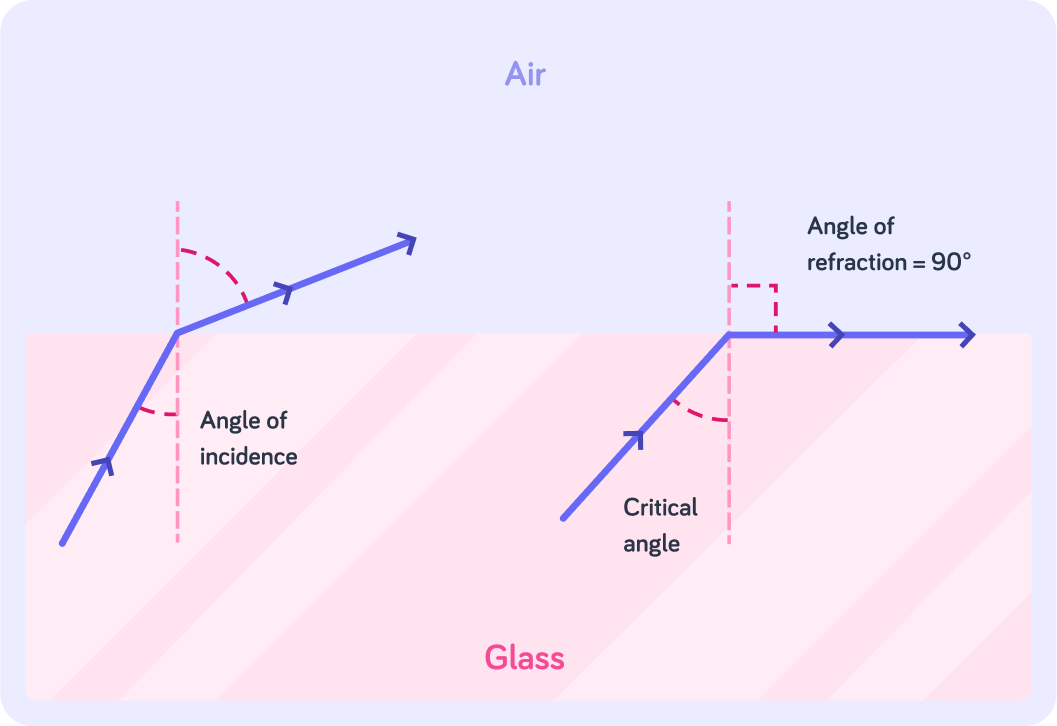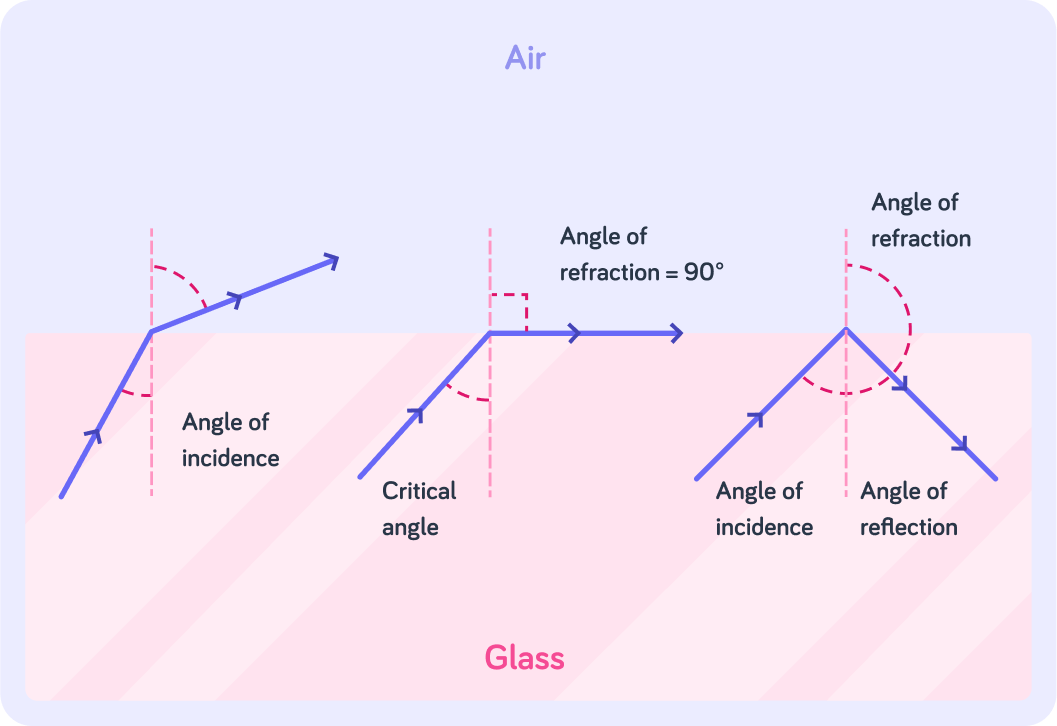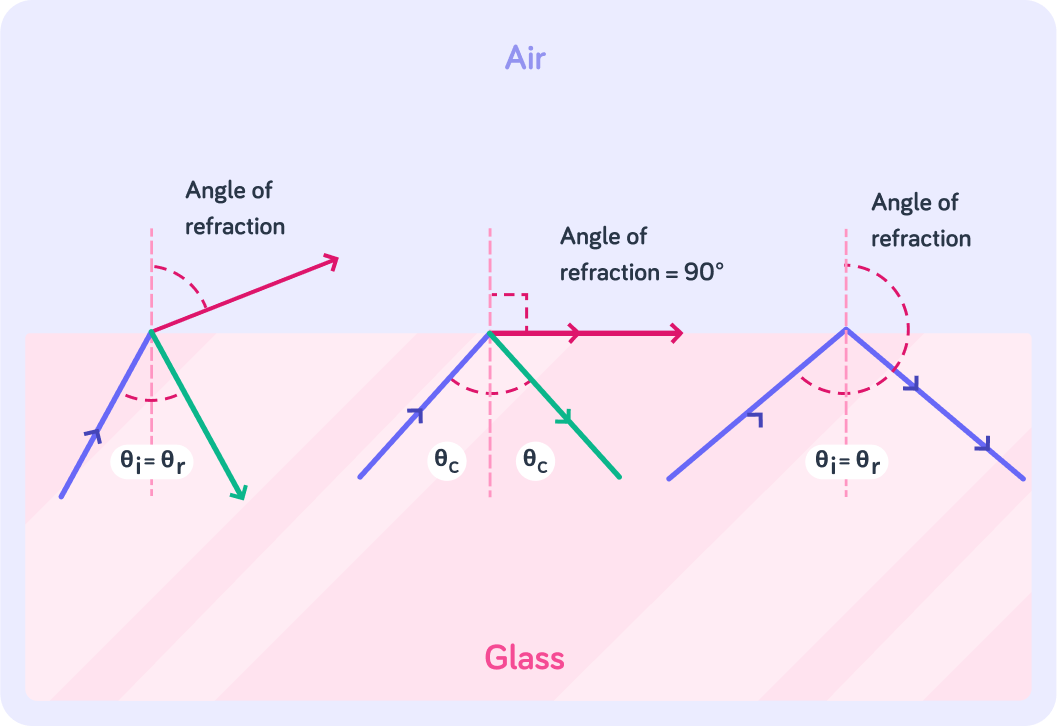YOU ARE LEARNING:
Total Internal Reflection

Total Internal Reflection
The critical angle marks the boundary between refraction and total internal reflection. When the angle of incidence is greater than the critical angle, a wave will be reflected internally.
In this lesson, we shall only be concerned with light travelling from a denser medium to a less dense one. Lets first recall the basics of refraction:
Does the speed of a ray of light increase or decrease when it enters a less dense medium?

Does the ray bend away or towards the normal? Remember F.A.S.T.

In this case, will the angle of refraction be larger or smaller than the angle of incidence?

What do you think is a good description of when the angle of refraction is 90o?

This diagram shows what happens when the angle of refraction is 90o
The angle of incidence which causes this to happen is called the critical angle, θc

What is the critical angle θc?

What do you think happens if you increase the angle of incidence to be greater than the critical angle?

Total internal reflection is what happens when θi>θc
All of the light is being reflected back into the glass block, None of it is being refracted.

For total internal refraction to occur, which of these options is true?

Most materials refract as well as reflect light.
In this example you can see blue light refracting red light and reflecting green light.

Does the law of reflection still hold for this scenario? Answer yes or no.


Notice that total internal reflection occurs when all the light is being reflected.
Internal reflection can occur at the same time as refraction.

True or false? Light can be refracted at the same time as being reflected.

Refraction occurs when waves are transmitted by media. Does transmission occur in total internal reflection?

